Wealthy and well-educated: The bombers behind the Sri Lanka attacks
By Deborah Haynes From Sky News UK

Death came to Sri Lanka in rucksacks worn by eight men.
The suicide bombers struck churches and hotels within minutes of each other, turning the innocence of Easter Sunday into scenes of terror.
Two days later Islamic State said it carried out the bombings, releasing a video of suspects pledging allegiance to its leader Abu Bakr al-Baghdadi.
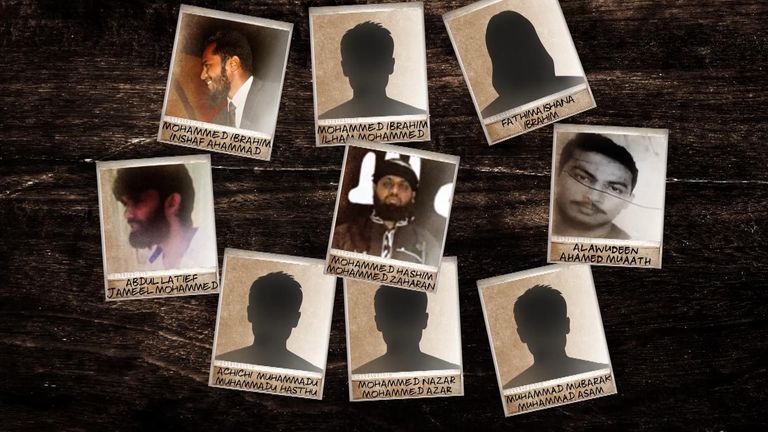
Only one face is unmasked. That of Mohammed Hashim Mohammed Zaharan, in his early 30s, a self-styled radical preacher and the suspected ringleader of the group.
He targeted the Shangri-La hotel in Colombo with another bomber.
The other seven men – a woman is also suspected of blowing herself up after the initial assault – who took part in the carnage on 21 April are from different parts of Sri Lanka.
They are largely well-educated, well-travelled and with wealthy families
CCTV images of the bombers from that day illustrate their coordination and training.
They used identical rucksacks to carry their explosives. Most were pictured with baseball caps to hide their faces.

Two were caught on camera in a change of clothes to conceal their tracks.
Some were seen on their mobile phones, possibly receiving instructions from someone else, perhaps evidence of a wider network.
Security sources in Sri Lanka warn that more bombings could happen because other members of the group remain on the run despite a massive operation to round up suspects.
Seven hours’ drive from Colombo is the majority Muslim town of Kattankudy on Sri Lanka’s eastern coast.
This is where Zaharan was born into a poor family, the eldest of five children.
Friends described him as an arrogant but compelling orator, with hard-line views on Islam.

But leaders of the Muslim community were damning, saying he was expelled from a religious college for breaking rules and excluded from a mosque for lying.
He set up his own group: National Towheed Jamaat, or NTJ in 2012, using it as a platform to criticise others, even those of his own faith who didn’t agree with him.
But after five years members of his own organisation had grown tired of his radical stance, writing to him to say he had been expelled.
Mohammed Yusef Mohammed Towfeek, who has known Zaharan since 2002, took over as leader of the NTJ.
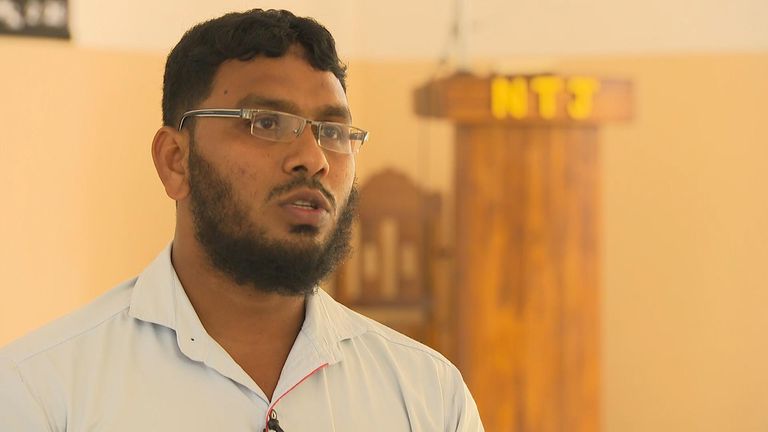
He claimed Zaharan only showed he was an IS supporter through online posts after he fled the town in 2017, wanted by the police for fighting with another group.
“When he was talking over the Internet he was saying: this parliament is not good, the law is not good, different Muslim groups are not good,” Mohammed Towfeek said.
Asked how he felt about his long-time friend being the ringleader of the Easter bombers, he replied: “I feel angry and I feel ashamed because Zaharan betrayed me. We’d spent so much time together and we started the NTJ together – but he has betrayed me.”
A couple of hours later, Mohammed Thowfeek was arrested by police in a raid on the mosque.
Officials have linked the NTJ and another little-known Islamist group to the attacks.
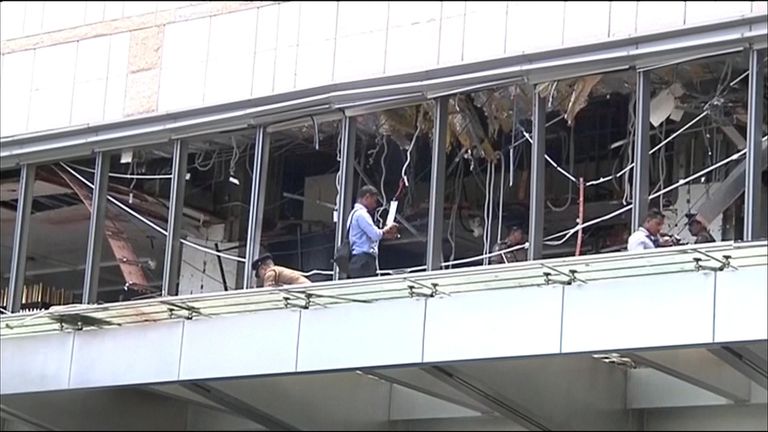
He denied the claim, saying his organisation had cut ties with Zaharan and his followers.
Often found ranting online, Zaharan was on the radar of Indian intelligence for his radical views but wasn’t hunted down by Sri Lanka despite warnings from India about a possible attack in the making.
Instead he was able to transform into a suicide bomber, resurfacing at the Shang-ri La hotel to kill.
A second bomber, Abdul Latief Jameel Mohammed, 36, studied engineering in the UK for a year and a half from 2006. He also did a post graduate in Australia.
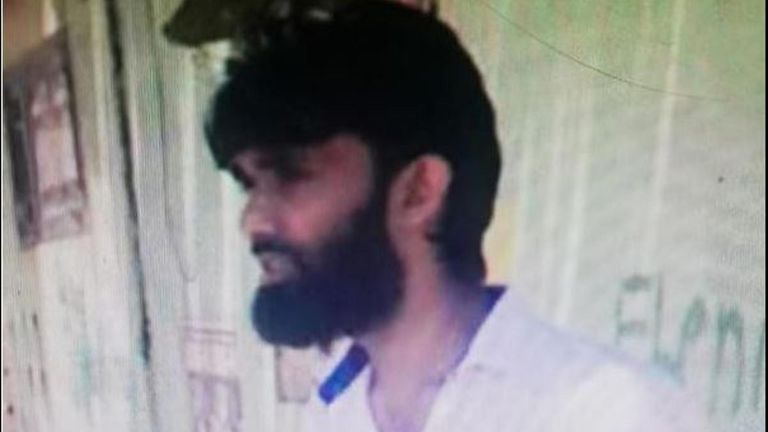
His mission on the day of the attacks did not go to plan.
He is pictured in a photograph looking at his phone as he posed as a guest at the five-star Taj Samudra hotel in Colombo.
Sky News understands he positioned himself at a table – most likely in a breakfast dining area – and tried to detonate the bomb on his back.
Three times he attempted to activate the charge but it didn’t work.
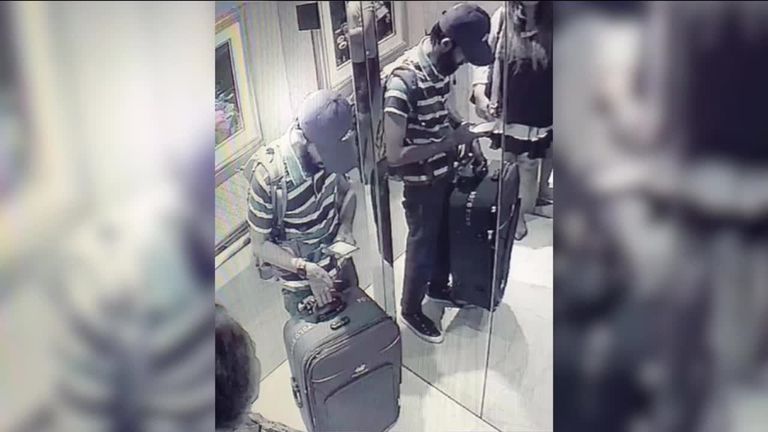
A source said CCTV footage shows that his mobile phone, on the table behind him, then suddenly rang – a further suggestion of external elements being involved, possibly calling him to find out why there had not yet been a blast at the hotel.
He is then pictured kicking the table in frustration before leaving the hotel, switching into a different shirt and retreating to the outskirts of the city.
Abdul Latief checked into the low grade Tropical Inn where he dumped his rucksack bomb and a large suitcase in his room before heading out.
He walked to a local mosque said to be sympathetic with the NTJ to pray, though a second source said the mosque was closed so he could not enter.
Four hours later at around 1330 – the first of the suicide bombs went off at about 0845 – Abdul Latief returned to the guest house.
A receptionist saw him enter with a smile on his face. He shut himself in his room. Eight minutes later his bomb exploded, killing himself and two other guests, a man and woman.
Investigators believe he had been trying to fix the bomb when it exploded.
Police were already monitoring this son of a tea trader from the central city of Kandy.
Abdul Latief had two passports and travelled widely, including at least two times to the UK, possibly also trying to reach Syria.

Next are two sons of a wealthy spice trader.
Mohammed Ibrahim Inshaf Ahmmad, 35, hit the Cinnamon Grant hotel in Colombo, while his brother Mohammed Ibrahim Ilham Mohammed, 32, struck the nearby Shangri-La.
A pregnant woman called Fatima was married to one of the brothers. She died later in a bomb blast during a police raid on the family home in the Dematagoda suburb of the capital.
Mohamed Ibrahim is the head of this well-to-do family.
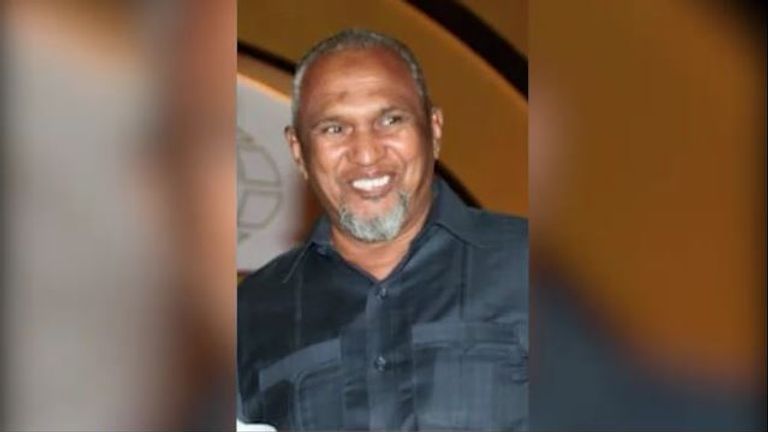
He is a respected businessman who owns a spice trading company Ishana Exports – doing business around the world, including in Europe.
The father is now under arrest as US agents help the Sri Lankans examine his three-storey, white house in an upmarket neighbourhood.
A neighbour, who has been a friend of the deeply religious family for decades, said he last spoke to Mohammed Ibrahim on Good Friday, saying he seemed normal.
“Even up ’til now we can’t imagine how they became like this: suicide bombers,” he said.
“They had a good wealth, good education and all that background. We can’t understand what happened really.”
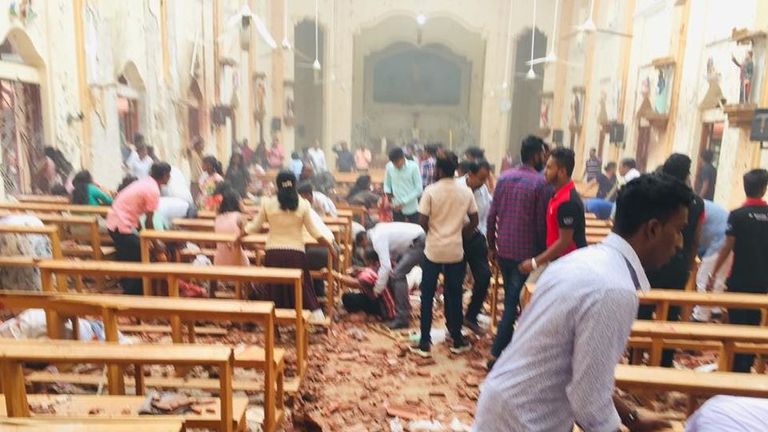
The younger son, Ilham Mohammed, ran a coffee making business on a commercial street in the capital where the father’s company logo can be seen on a building opposite.
Other properties are at a small industrial estate a short drive away, including a sprawling warehouse used by the father to store his spices, and a copper factory run by the elder son.
Police have shuttered both of these premises as part of their investigation.
The various business interests meant the brothers often travelled oversees, at some point developing extremist views.
These were also seemingly held by Fatima who lived at the family home. She is suspected of killing herself, her unborn child and her two children in a blast during a police raid after the main bombings. Three officers died as well.
At least one of the other bombers was also from Colombo. Alawudeen Ahamed Muaath, aged 22, is perhaps the youngest of the gang. He attacked St Anthony’s church in Colombo.
Sky News can reveal this picture of him.
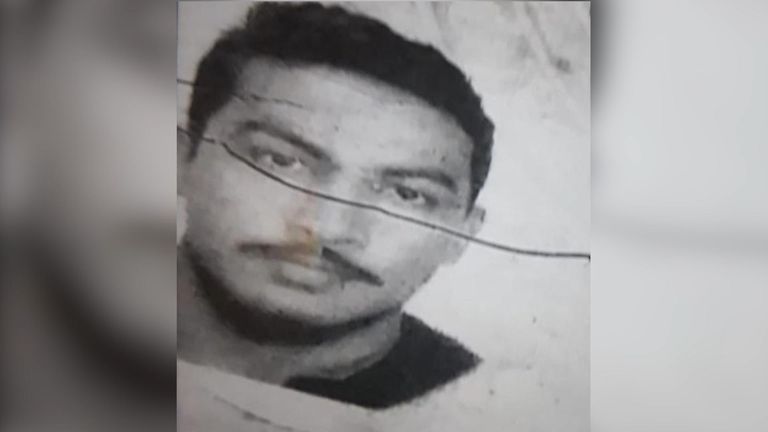
He’s thought to be from another well-off family. His driving licence is addressed to a small plastics factory in the capital, which belonged to his father but is now run by an uncle.
A man who owns an oil supply outlet – used by the many rickshaws in Colombo – across the road from the factory said he had seen Ahamed Muaath around. He described him as quiet and said he did not seem radical. He said he was surprised to learn this man was a bomber.
Two more of the suspects have been named locally as Mohammed Mubarak Mohammed Assam who hit the Kingsbury hotel in Colombo.
And Achchi Muhammadu Muhammadu Hasthu who carried out the bloodiest of the bombings at St Sebastian’s Church in the town of Negumbo.
Last is 34-year-old Mohammed Nazar Mohammed Azar, from the same hometown as the group’s ringleader. He targeted a church in nearby Batticaloa
Footage obtained by Sky News tracks his final seven and a half hours. It’s the most detailed record yet to emerge of any of the attackers ahead of their coordinated strike.
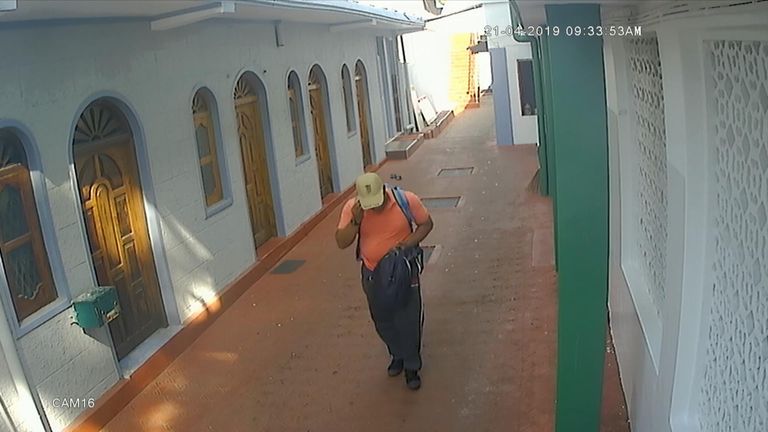
The bomber is pictured messaging and speaking on a mobile phone, praying at a mosque and scoping out his target – the Zion church.
Among his victims, at least 13 children.
The CCTV images capture Mohamed Azar arriving in the region on bus at just after 2am on Sunday morning.
He switches his mode of transport to a rickshaw, travelling a further hour until he pulls up outside the Jami Us-Salem mosque in Batticaloa.
The bomber leaves the vehicle and walks to the front gate of the mosque clutching two bags.
At 05:42am the gate of the mosque is opened, allowing the attacker to enter.
He can be seen walking inside the compound with his bags, presumably containing a suicide bomb, before finding a place to leave them.
At just gone 6am he joins fellow worshippers to pray – Mohammed Azar is the man on the far right – before slipping away early, one hand in his pocket

Next he is pictured in colour pictures, which show a bright blue t-shirt and black tracksuit bottoms, praying alone between two plastic chairs.
The man then changes into the outfit he will wear for the suicide mission – switching to an orange top, a beige cap with an energy drink logo on it and a rucksack.
He appears to be staking out his target, speaking on the phone and walking slowing
It’s only minutes until the first suicide bomb goes off in Colombo.
He returns to the mosque before re-emerging at just after 0930.
As he exits the mosque he digs a mobile phone out of his pocket, looking at the screen and seemingly writing a message.
He strides casually along the street, stepping over a cordon, before disappearing out of shot.
The moment of the attack is not shown in the images.
The deaths of these bombers are by no means an end to the terrorist threat in Sri Lanka.
A complex investigation is under way, looking at the group and wider network, including its links to extremists overseas.
A raid on the east coast of this Indian Ocean island last week uncovered a haul of bomb-making kit and an Islamic State flag.
A source told me that Zaharan may have trained scores more bombers.
Two of his brothers and their father blew themselves up after clashes with security forces on Friday evening into Saturday morning.
More than 100 people have been arrested, while others remain at large, with security forces still on high alert.
For more on this story and video go to: https://news.sky.com/story/wealthy-and-well-educated-the-bombers-behind-the-sri-lanka-attacks-11708206





